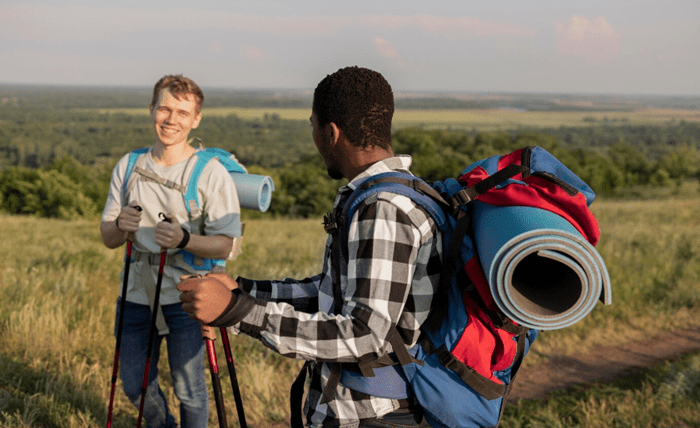Embarking on a cross-country camping trip is a thrilling adventure, offering the opportunity to explore diverse landscapes, connect with nature, and create lasting memories. However, careful preparation is necessary to guarantee a hassle-free and enjoyable trip. To ensure the success of your vacation, every detail, from route selection to packing necessities, needs to be well thought out. This comprehensive guide will walk you through the steps to plan the perfect cross-country camping excursion, allowing you to experience the wonders of the open road and the great outdoors with confidence.
Choosing Your Route:
The first stage in organizing a cross-country camping trip is choosing the route, which has a big influence on the trip’s outcome. When planning your route, consider factors like time limitations, places of interest, and your preferred terrain. Choose historic routes to discover interesting sites and cultural attractions along the road, or take scenic routes and visit national parks to fully experience nature’s beauty. Consider campsite facilities and availability as well to make sure you have appropriate locations to unwind and refuel every night.
Vehicle Preparation:
Before hitting the road, it’s essential to ensure your vehicle is in top condition to handle the demands of a cross-country journey. Arrange for an in-depth inspection to verify vital components, including tires, brakes, fluids, and lights. Consider making any required improvements or changes to improve the functionality and comfort of your car, such as mounting a roof rack for more storage or adding off-road gear for rough terrain. If you are using an overland rooftop tent, ensure your vehicle’s roof rack system is sturdy enough to support the weight and securely mount the tent for safe and hassle-free camping.
Packing Essentials:
Packing efficiently is crucial for a cross-country camping trip, as you’ll need to balance comfort, convenience, and space limitations. Make a thorough inventory of all the things you’ll need first, such as clothing, cooking materials, camping equipment, and emergency supplies. Give priority to small and light equipment to optimize available space and save fuel usage. Remember to bring layers of flexible clothing and appropriate shoes for both outside activities and different weather situations. Stock up on non-perishable food products, water, and emergency supplies as well to make sure you’re ready for any unforeseen circumstances while traveling.
Campground Reservations:
It is essential to make reservations for campgrounds well in advance, particularly during periods of high travel demand when spaces may be limited. To ensure a place at your favorite locations, thoroughly research and reserve campsites along the route well in advance. When choosing campgrounds, consider elements like location, facilities, and proximity to attractions. Make reservations months in advance for famous outdoor attractions and national parks to prevent disappointment. If you prefer more flexibility, explore options for dispersed camping or boondocking in designated areas where camping is permitted without reservations.
Safety and Emergency Preparedness:
Safety should always be a top priority when embarking on a cross-country camping adventure. Pack a thorough first aid kit, materials for roadside assistance, and necessary equipment for car maintenance and repairs to be ready for anything. Familiarize yourself with local regulations, wildlife hazards, and potential natural disasters in the areas you’ll be visiting. Keep an eye on local traffic conditions and weather forecasts before you go, and modify your plans as necessary to stay out of dangerous circumstances. Keep in touch with friends and family, and let them know your itinerary and emergency contact details.
Exploring Points of Interest:
One of the most rewarding aspects of a cross-country camping trip is the opportunity to explore diverse points of interest along the way. Plan your schedule considering the sights, landmarks, and outdoor activities in each of the regions you will be traveling through. Spend some time getting to know the local way of life and the beautiful surroundings of every place you visit, whether you’re going to famous national parks, historic sites, or charming little towns. When traveling cross-country, have an open mind and be open to impromptu diversions and surprising discoveries, as they frequently result in unique encounters and exciting new experiences.
Conclusion:
Planning the perfect cross-country camping trip requires careful consideration of various factors, from route selection to safety preparedness. By following these instructions and spending the time to plan and prepare, you can set out on an amazing journey full of beautiful landscapes, thrilling encounters, and priceless memories. So, pack your bags, load up your vehicle, and hit the open road with confidence, knowing that you’re well-equipped to enjoy the wonders of the great outdoors on your cross-country camping expedition.



